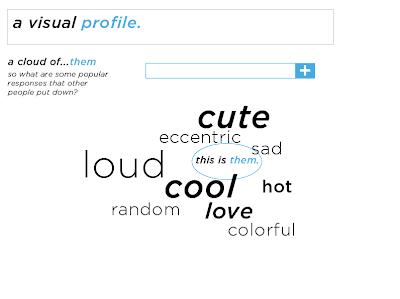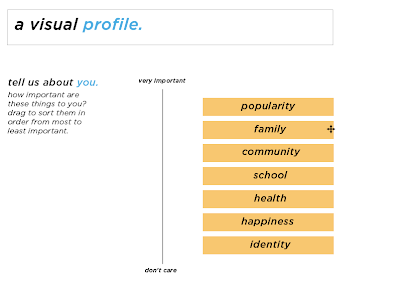The Interface: p.63 - 78
In this section of the reading, I was quite fascinated by the connections drawn between graphic interfaces and the design aesthetics established by the Blade Runner movie. In essence, it seems that Macintosh and Blade Runner provided the wireframes for the basic GUI, whereas subsequent companies and/or individuals gave these wireframes the design through which we know them today.
But I was especially interested in the part where the author ruminates on how the role of the computer has changed, from "being a particular technology…to a filter for all culture…" (p.64) But this is by no means surprising, when we consider the nature of technological innovations in general. Condensing many parts into less or even a singular unit seems to be a basic trend as far as new technologies go: think of how modern CD players could play CDs, and tune into radio stations. Or, even more currently, separate CDs versus all the songs being loaded into one iPod. (with room to spare.) So its really not that surprising that our computers today could almost render things such as TVs, radios, calculators, etc obsolete.
Cinema: p.78 - 93
Some interesting points are brought up this section. The author wonders wonders how "a language designed by a rather small group of people that is immediately adopted by millions of computer users." Its not because we're "wired" to this sort of thing. Rather, it is thanks to familiar cultural forms. This reminded me of how high school language teachers often instruct students on new languages. They're often shown images (people, food, animals, etc.) that we can all recognize and through this familiarity taught another way to say "apple", for example.
The section where they talked about how computer games utilize cinematic elements such as the implementation of a dynamic point of view was pretty intriguing as well. It reminded me of childhood days spent playing the Legend of Zelda games. One of the best features of the game's interface was the control over the player's camera angle. A single joystick allowed the user to toggle the angle, and even the proximity to the character. Or, they could even simply press the "Z" button (which later coined the term, "Z-Targeting") to automatically orient the camera to their character's straight-on perspective.
Some games don't allow their users to have too much control over this feature, instead letting the AI attempt to preempt where the user might need to view. This lack of control however, is mostly just frustrating.
The Screen and the User:
I was most interested in this section of the explorations of the screen as something that is "dynamic." The idea of a screen is simple enough. A square/rectangular frame that is essentially a window or portal into a virtual space. There is of course, some suspension of disbelief. (just like in cinema) Our files and documents do not actually folders, icons, etc. Rather these are merely the forms that we interact with them in. All our texts and documents are simply bits and pieces of binary code.
But its definitely true how our "viewing regime" is made possible by the full screen viewing. It's something that we often take for granted or forget entirely; until the resolution is off, or the screen image is misaligned and this break in the illusion becomes glaringly annoying.
The reading goes on to note how historically, the screen has always been a simple rectangular object - one that we view from the comfort of our seats. Thus, I'm very much interested in what happens when this classical window is expanded, into virtually everything around us.
I'd like to make a note at this point on the term "virtual reality." Up until last semester, I was often wary about the term because it sounded so…dated. Instead of technological change and innovation, the term called to mind campy science fiction movies from the early 80s and 90s. Thus, I was happy (relieved?) to find a more suitable alternative when I was looking through some of GE's new site features: "Augmented reality." The phrase certainly has the right connotations. The term "virtual," while true that it implies that it doesn't exist outside of the software, imposes separate boundaries between our world and the simulated. "Augmented" on the other hand implies more of an integration with the real world, with the technology making it something greater than it actually is.


















































